HIGH-LEVEL MEETING ON COUNTERING NUCLEAR TERRORISM, WITH A FOCUS ON STRENGTHENING THE LEGAL FRAMEWORK
H.E. Mr. Ban Ki-moon, Secretary General of the United Nations
H.E. Mr. Vuk Jeremić, President of the General Assembly
H.E. Mr. Yukiya Amano, Director General of the International Atomic Energy Agency
Distinguished co-speakers
Excellencies
Ladies and gentlemen
In the first place, I would like to thank the Secretary-General for inviting me to participate in this opening session to share the views of the Argentine Republic on such an important and current matter.
Mr. Chair,
In recent years, concerns about the risk posed by nuclear terrorism have been growing, and the international community has reacted either by creating new tools or improving the existing ones.
At the multilateral level, the General Assembly through the “United Nations Global Counter-Terrorism Strategy” has regularly stressed the importance of adherence to the various instruments for the fight against terrorism. In this regard, the various conventions on terrorism, and more precisely, the International Convention for the Suppression of Acts of Nuclear Terrorism, adopted by the UN General Assembly in 2005 that came into force in 2007 and that Argentina signed, reflect the concern of the entire international community.
In the same field, the Convention on the Physical Protection of Nuclear Materials adopted in 1980, and its amendment, adopted by our country in 2010, shows us the way and proves that this issue is of vital importance.
The importance of this scourge has been highlighted in the framework of the Security Council as well. Resolution 1373 (2001) already expressed concern about the relationship between international terrorism and illegal trafficking of nuclear materials. Meanwhile, resolution 1540 of 2004 calls upon all States to ensure that no non-state actors gain access to nuclear, chemical or biological weapons and their means of delivery.
At the same time, important intergovernmental initiatives added their contribution to this issue. In this regard, the process of the two Nuclear Security Summits in Washington and Seoul aimed at giving greater visibility to the issue by encouraging actions to be taken. For its part, the Global Initiative to Combat Nuclear Terrorism established a new structure starting in 2010 to advance the collection and development of concepts, good practices and potential guidelines that consider specific aspects of this complex issue.
Through these and other tools in a scheme of variable geometries, our countries approach and promote actions to reduce the risks of nuclear terrorism.
Mr. Chair,
The architecture of nuclear security and the fight against nuclear terrorism that we have described certainly have great value, and in all cases act as a contribution to the work of the IAEA, an intergovernmental organization providing the natural forum for international consideration of the subject.
In this regard, we believe that in the next phase, a holistic consideration should be encouraged by the IAEA of this architecture in order to properly assess the areas covered and those where it will be still necessary to fill any gaps with an approach that combines effectiveness and efficiency.
One standard recognized by the international community is that the physical protection of nuclear material is primary competence of each State. In this sense, the progress to be achieved in the international coordination of efforts should remain supported by actions in various formats, and mainly through the IAEA, to make instances of capacity generation available to the countries who request it.
In closing, Mr. Chair, let me to add some thoughts,
Actions necessary to fight nuclear terrorism and that we support and where we actively participate, should not become indirect ways of limiting the rights of countries to technological autonomy and to the peaceful uses of nuclear energy.
My country has said on other occasions that actions to counter terrorist threats must be proportional to the real risk that each country faces. From this perspective, we understand that there must be special care for the physical safety of existing nuclear arsenals, whose sole responsibility lies with the nuclear-weapon bearing States.
This special care must be supplemented with additional concrete measures of nuclear disarmament according to commitments undertaken in the Non Proliferation Treaty. The best way to ensure that nuclear weapons do not fall into the wrong hands is their total elimination.
Thank you very much.

